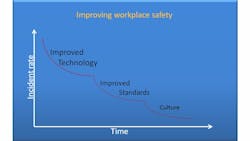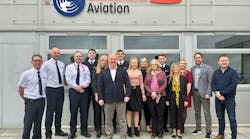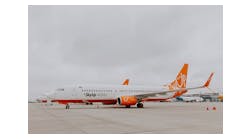Poor safety is probably the greatest concern in today’s workplace. Risk-taking behaviours result in injuries and cost to the individual and employer and cause demotivation in the workforce generally. An employee’s personal life can be severely influenced by avoidable safety mistakes.
To effectively face this problem, every workplace needs to develop a strong safety culture. Consider that new technology typically will result in a significant initial improvement in safety performance. But this will only take an organization so far.
Improved standards and a Safety Management System will provide the next level of improvement.
But the final hurdle remains to be implementing a sustainable safety culture. This is also generally the hardest for management to achieve without the help of an external facilitator.
A major Australian airport recently set about tackling exactly this issue. Surveys of airside workers over a number of years, indicated the number one concern among employees was excessive vehicle speeds. The managers of airside organisations weren’t actively encouraging their drivers to speed, but some were probably not doing enough to actively discouraging it either! The airport company were issuing Penalty Infringement Notices (PINs) but was not deterring enough of this risk-taking behaviour. Yet there was an ingrained cultural issue in relation to driver speeding behaviour.
Changing an ingrained culture need not be incredibly difficult but it requires commitment, the right change program and consistent enforcement.
Previous attempts to solve this issue had provided some benefit; but a more significant and sustained change was necessary to achieve the results now needed.
Global Safety Partners have extensive experience changing safety culture across hazardous and aviation businesses. Approaching the problem from an external perspective enabled them to implement a three-phase program to tackle this risk-taking behaviour. Working with the airport, airlines and ground handling organisations, Global Safety Partners designed and implemented a change program that provided the program that has delivered the needed results in 5 short months..
Phase 1: Observation and Engagement
Often, safety concerns are tackled with Band-Aid solutions. These programs do not provide the sustained change nor tackle the root cause of the problem.
Through extensive observation of drivers from the terminal, the speed compliance rate was concerning. Interviews with managers, leading hands and safety representatives concluded that none condoned driver speeding despite recognising it as an issue. Most interviewees believed the issue was with drivers of other organisations and did not know the basis of the existing set speed limits. But it was the interviews with the drivers that were even more revealing.
Many drivers perceived their managers and leading hands to supporting speeding if it got the job completed more efficiently. These supervisory staff were not condoning speeding but they were often not doing enough to actively discourage it either! Many transferred the responsibility for controlling vehicle speeds to the airport owner but it is not the airport owner’s job to control the activities of a tenant’s employees, only their own employees and contractors!
Phase 2: Developing a Suitable Program
Global Safety Partners developed a single three-hour workshop to be run on different days and times to suit a shift work environment over the two-month period. The workshop targeted managers, supervisors, safety representatives and leading hands of all airside organisations. These people are the key influencers of airside personnel.
The workshops conveyed the safety messages in a manner which resonated with the target audience and allowed substantial discussion amongst the attendees. They took a practical approach focussing on education and provided target audience with tips to make them more effective supervisors. Many of us are placed in supervisory positions because of technical knowledge but are not taught how to direct people effectively. This program gave the audience many of these skills.
The program also introduced a new reward and penalty system developed with driver input. This, in turn, helped motivate a change in driver behaviour and overall safety culture and provides both recognition to those who help develop a safety culture and ‘go the extra mile’ as well as providing a simple Just Culture for warranted poor behaviours. Effectively, the reward system was their system recognizing behaviours that they felt were worthy of recognition.
Phase 3: Enforcement and Reward
Following the workshops, a sustained period of enforcement was introduced. This required additional staff to support the change and monitoring needed. At first a few drivers were caught speeding and subjected to the agreed enforcement. This showed how serious the airport was about creating a safer workplace for everyone.
Each participant was provided with a "toolbox" to effectively communicate to their airside drivers the importance of speed limits and trained on how to run an effective toolbox in their workplace. This was supported by the airport’s communication program.
Recognition of drivers ‘going the extra mile’ started rewarding drivers who made a significant contribution to an improved safety culture across the airport recognized by the airport company, their employer and their workmates. This provided incentive for an organisation-wide shift allowing a strong platform for future safety advancements.
Three weeks into the program, results were starting to become obvious. Two weeks after the conclusion of the workshops, compliance with speed limits had moved from less than 50 percent to 96 percent.
This change has resulted in less time managing the consequences and more organised workforces, improved planning, less infringements and a strong safety culture. A significantly safer workplace for everyone and no increase in flight delays!
This program has provided the strong foundation in safety necessary to drive further safety improvements.
About the Author: Ian Bell, director of Global Safety Partners, has a long history in the aviation industry first with Trans Australian Airlines and Australian Airlines (the forerunners to Qantas). He spent 11 years in airlines' operational roles before joining the Shell Company of Australia where he spent 23 years in a range of senior management roles including having primary operational responsibility for the Shell Aviation operations throughout Australia and Papua New Guinea. Ian has also been involved with the Australian Aviation Ground Safety Council, which is intently focused on improving ground safety performance in airports across the Australasian region. He can be contacted at [email protected]




